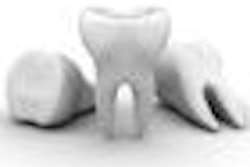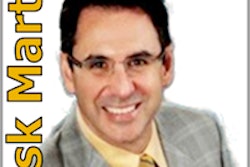
This year marks the 10-year anniversary of the merger that created 3M ESPE. In that time, the joint efforts of the research and development teams in Germany and the U.S. have yielded products that have had a significant impact on the practice of dentistry.
For example, combining nanotechnology developed at the ESPE facility in Seefeld, Germany, with 3M's direct impression materials yielded Protemp 4, the first nano-filled temporary composite. Ditto with Filtek Supreme, one of the first universal composites to successfully address the challenges of aesthetics and durability, according to Rainer Guggenberger, PhD, an ESPE scientist based in Seefeld.
Since its introduction in 2002, Filtek Supreme has become one of the top-selling restorative products in the world and one of the company's most significant postmerger accomplishments, according to Joe Oxman, PhD, a 3M ESPE scientist.
"Both labs had developed a family of intellectual property when the two organizations came together," Oxman said. "It was bringing together the best of the best in this new category, and the end product was this material which has been one of the holy grails in the dental industry -- a low-shrinkage, low-stress composite material."
Quite a few new raw materials synthesized in the Seefeld chemical laboratory have become part of the recipe of U.S.-based new product developments at 3M ESPE, Guggenberger added.
"The 'center of gravity' for composites and nanotechnology was more at the 3M lab in St. Paul [MN], while the ESPE labs in Seefeld were stronger in the field of impressioning materials and systems, cements, ceramics, and CAD/CAM," he said.
Behind closed doors
Back in 2001, it was not clear to many what the merger might yield. In fact, few knew of the deal until after it was done.
"It was very secretive," recalled Keith Haig, director of marketing at 3M ESPE, who was with 3M at the time. "We didn't find out about the merger until it was public knowledge. Only a select few in management in each company knew about it."
— Rainer Guggenberger, PhD
While there was an element of apprehension in the atmosphere when the deal was first disclosed, there was excitement about the potential product-development opportunities, according to Haig.
"I remember thinking when I was a sales representative 20 odd years ago what a good company ESPE was and how difficult it was to go up against them," he said. "They were always looked up to as very strong in indirect impression materials, while we at the time were very strong in the direct portfolio."
Guggenberger agreed. "Overall there was an outstanding level of appreciation for the expertise of the 'other side,' " he said. "It also was fun for all the experts to tap into technologies so far owned by a competitor."
The deal also made sense from a market-penetration perspective, Haig said.
"In terms of geography, where 3M was strong, by and large, ESPE wasn't and vice versa," Haig said. "Ten years ago in Germany, ESPE was the dominant company in what is by far the biggest economy in Europe and the biggest dental market, while 3M dental was not strong in Germany but was very strong throughout the rest of Europe."
Glass ionomers and more
Another key product to come out of the 3M ESPE collaboration was Ketac Nano, which improved the ease of use for glass ionomer restorative materials. This product was further enhanced last year with the introduction of the Quick Mix Capsule, yielding the first paste-paste nano-ionomer in an automixing, unit dose capsule.
"The partnership with our colleagues in Germany enabled us to deliver a glass ionomer restorative material without having to use a more typical tricherator or mixing device," Oxman said. "They were able to design a tiny capsule with a static mixing tip. It was really quite a significant technical advance because it eliminated multiple steps and equipment, and it allows direct delivery into the oral environment."
RelyX Unicem, introduced in 2002, has also made a significant splash in the industry. "It really was a cutting-edge product, the first of its type, and since its introduction there's been quite a flurry of activity to create similar types of self-adhesive resin cements," Oxman said.
Much of the RelyX Unicem development took place in the ESPE lab in Germany.
"The idea was to radically simplify the cementation procedure," Guggenberger said. "The solution was provided by the self-adhesive composite technology."
The two facilities also worked closely on the Lava Chairside Oral Scanner, the company's answer to Sirona Dental System's Cerec and other chairside dental CAD/CAM products.
"Ten years ago there was basically no all-ceramic material for bridges or posterior crowns; porcelain-fused-to-metal or full-metal crowns were the only choices," Guggenberger said. "With CAD/CAM technology and zirconia as a high-strength ceramic material, the situation has changed completely."
The list of innovations resulting from the merger goes on, he added:
- Pentamix 3, a mixing device for polyether and VPS impression materials
- Filtek Silorane, "by far the lowest shrinking composite" in restoratives
- Elipar FreeLight/S10, a curing light with a seamless stainless steel body
- Adper Easy Bond, a "very forgiving" adhesive for both self- and total-etch procedures
- Vanish 5% sodium fluoride white varnish, a fluoride-delivering preventive coating
Looking ahead, 3M ESPE expects to remain at the forefront of new product development that enhances the practice of dentistry in the digital age, according to Haig.
"Customer insight guiding R&D will continue to be the source of our strength," he said. "The velocity of change in the industry is going to accelerate. The digital aspect is going to increase, and we're at the forefront of those technologies."
The creation of new workforce models, such as dental therapists, will also have an impact on 3M ESPE product development, as will preventive dentistry trends.
"The area of prevention is just going to continue to grow, and we're well-positioned to participate in that effort over the next 10 years," Haig said.



















